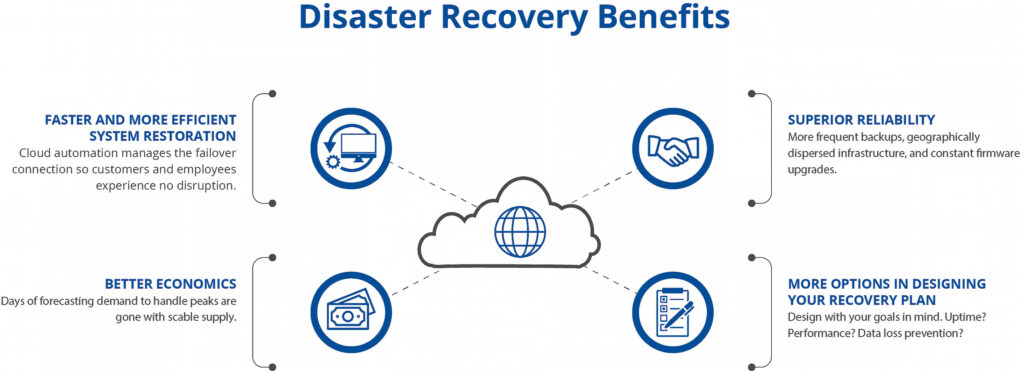Before considering tabling the idea of outsourcing the management of your infrastructure, consider the recent outages that affected several high-traffic MyFlorida websites. The impact reached DMV services, the Department of Children and Families, and even the website for Governor Ron DeSantis. How did this happen? A hardware failure occurred following the malfunction of a backup processor that ultimately took more than 1,100 servers offline. Despite the best efforts of Florida state’s IT disaster recovery teams, several days elapsed before all servers and sites were back online 100 percent.
The Center Square’s article, “Florida Digital Service Cybersecurity Initiatives Stymied by Manpower Shortage,” shares that the Florida state government budgeted to improve cybersecurity and disaster recovery by creating the Florida Digital Service. However, the Digital Service’s CIO, James Grant, stated their team is understaffed and spends most of its time on ‘incident response.’
Sound familiar?
By moving the management of your organization’s infrastructure to the cloud, you get the benefits and cost savings of cloud-based disaster recovery.
In Florida’s case, a microprocessor failed. But it’s not just the hardware that can cause unplanned outages. Hackers use social engineering or malware to access critical systems. A software bug rears its head at the worst possible time. A natural disaster damages or destroys a data center. A simple human error creates a cascade of events that takes hours to fix. Once issues like this happen, your response time to your constituents, contractors, and vendors gets delayed, and more issues become a risk, like:
- Processing payments for services.
- Access to critical systems and essential data.
- Impacts on your revenue, productivity, and reputation.
Disaster Recovery, Business Impact Analysis, and Responsibilities
Organizations attempt to manage disaster recovery spending and efforts via Business Impact Analysis (BIA). Essential questions to ask are:
- How much downtime is manageable?
- Which data do we restore first?
- How much revenue and productivity will we lose?
These questions may arise from the BIA findings:
- How much do we want to spend on hardware, software, and staffing to create redundant/failover systems? These purchases are CapEx and involve multiple levels of approval. They don't typically happen quickly.
- How much should we budget for maintenance and upgrades? Skimping here makes it difficult for your disaster recovery plan to meet the objections of your BIA.
- Which data is truly mission-critical, and where does it live (on-site, off-site - geographically close, across the country)? For example, in the case of natural disasters, a primary and backup site in the same city or county might both be rendered inoperative by the same event.
As you can imagine, even basic questions like these can be challenging to answer. When your organization manages its disaster recovery plan, the responsibility for the answers falls upon the CIO and IT staff. On-site and off-site servers, switches, disks, hard drives, tape drives, cooling, and power generation are duplicate points of failure! Take additional staff and training needs into consideration as well.
Disaster Recovery in the Cloud
Partner with a Cloud Service Provider like us to make your disaster recovery plan easier to implement and cost-effective. In addition, our service is a natural extension of your organization’s overall IT infrastructure plan. Here are a few benefits to know:

Faster and More Efficient System Restoration
- Automation allows data restoration and recovery as soon as a fault is detected.
- The process is seamless for employees accessing applications in the cloud. They continue getting their work done while the cloud manages the failover connection to another iteration of your system.
Better Economics
- If your peak demand is seasonal or lasts for only a few days a month, your BIA would likely still dictate that you buy hardware to meet the needs of your busiest times. Cloud-based systems allow you to quickly scale up or down your recovery plan as your overall IT needs change.
- With disaster recovery in the cloud, you gain the expertise of the technology partner and the use of best-in-class hardware and services. There is no need to hire additional IT staff and pay for ongoing training – it frees your existing staff to tackle other projects critical to your business.
- Cloud-based IT spends are classified as OpEx, making the budgeting and approval processes more efficient.
- With your IT infrastructure in the cloud, employees can get their work done on laptops and Chromebooks.
Cloud-Based Systems Have Superior Reliability
- Applications and services in the cloud run on world-class hardware and systems beyond most budget allotments and technical expertise available.
- It includes regular hardware, software, and firmware upgrades for security and performance.
- Less data is lost because backups happen more frequently.
- In the cloud, your IT infrastructure disperses geographically, preventing downtime.
More Options in Designing Your Recovery Plan
- You can design your recovery plan for performance and uptime and focus on maintaining core resources and functions.
- With your IT management and recovery plan in the cloud, you can quickly test different recovery scenarios without disturbing the production environment.
- Cloud-based IT spends are classified as OpEx, making the budgeting and approval processes more efficient.
- With your IT infrastructure in the cloud, employees can get their work done on laptops and Chromebooks.
Shrewd planning, incremental adoption, and support from a skilled, experienced partner can instill confidence and positively impact your organization’s journey. We want to be your provider for managed cloud services.


